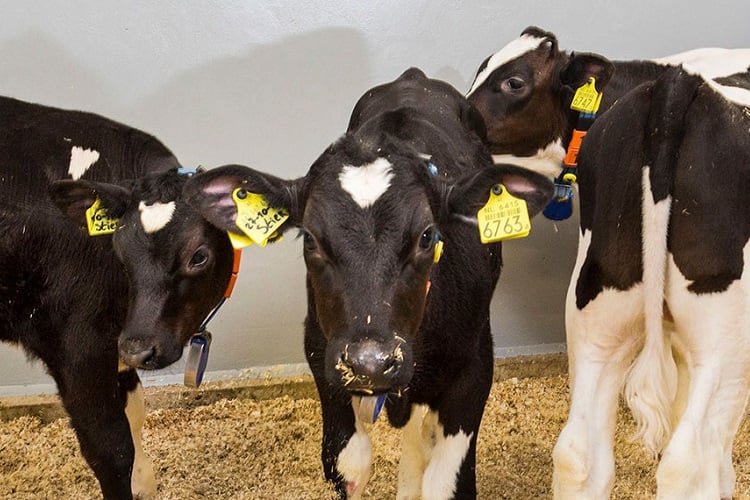Key takeaways from the research:
-
Delaying weaning by just a few weeks yields greater body weight during and after weaning.
-
Elevated planes of nutrition pre-weaning result in higher body weight after weaning.
-
Step-down weaning at a later age promotes rumen development.
-
Feeding elevated planes of nutrition in combination with gradual weaning at a later age stimulate growth and reduce stress.

Elevated planes of nutrition in combination with step down weaning at a later age improve growth and reduce weaning stress
Restricted feeding schedules stimulate early rumen development, but at the expense of growth and welfare. A high plane of nutrition in pre-weaned calves improves growth, welfare and health, but what are the weaning strategies that fit with higher planes of nutrition?
Having a sufficiently high body weight at weaning and using a weaning method that reduces stress are both essential to sustain rapid growth rates and animal welfare after weaning. Understanding how a higher body weight and less stress can be achieved simultaneously are the key to successful weaning.
The importance of a step-down weaning schedule
Calves weaned later in life after being fed elevated levels of milk feeding experience less weight loss and have fewer behavioural signs of stress[1]. In a joint study[2] by the University of Alberta, and Trouw Nutrition R&D, the effects of combining a step-down weaning approach with elevated planes of nutrition and weaning at a later age would result in even greater growth rates as well as better gut development.
Study design
Over 100 calves were fed elevated planes of nutrition and were weaned through a step-down process at either 8, 10 or 12 weeks of age.
Gradual weaning at a later age stimulated growth and gut development
Calves weaned at 8 weeks of age had a 46% reduction in average daily gain during step-down, but by week 9 average daily gain was back to almost 1000 g/d. Results in calves weaned at 10 weeks of age were similar. In contrast, calves weaned at 12 weeks maintained over 1000 g/d of average daily gain during step-down and therefore had a greater total weight gain over the trial period. Their final body weight was 4.2% higher than the calves weaned at 8 weeks.
Though blood serum ßHBA levels increased sharply after weaning in calves weaned at 8 and 10 weeks, calves weaned at 12 weeks displayed a less sharp increase in ßHBA, and therefore experienced less stress. Higher blood serum ßHBA is related to increasing ruminal mass and cell number. A gradual ßHBA increase is consistent with smoother activation of the rumen with potentially beneficial effects on calf growth and feed intake during the weaning period.
Conclusions
While calf growth decreased at weaning regardless of age, this was not as pronounced as reported in previous research[3]. A weaning dip will be less severe if calves are weaned at a later age. The growth advantage was evident if calves were weaned at 12 weeks instead of 8 weeks, indicating that calves may benefit from delayed weaning when fed an elevated plane of nutrition pre-weaning and when weaned using a step-down method. Delaying the age of weaning lessens the reduction of average daily gain and leads to more gradual increases in ßHBA. Better nutrition pre-weaning increases this effect on weight gain. Elevation levels of pre-weaning nutrition do not only improve production performance, later on, they also improve welfare by reducing stress at weaning.
References
[1] de Passillé, A.M., Borderas, F., Rushen, J., 2011. Cross-sucking by dairy calves may become a habit or reflect characteristics of individual calves more than milk allowance or weaning. Appl. Anim. Behav. Sci. 133: 137-143.
[2] Meale, S.J., Leal, L.N., Martin-Tereso, J. and Steele, M.A., 2015. Delayed weaning of Holstein bull calves fed an elevated plane of nutrition impacts food intake, growth and potential markers of gastrointestinal development. Animal Feed Science and Technology 209: 268-273.
[3] Sweeney, B.C., Rushen, J., Weary, D.M., and de Passillé, A.M., 2010. Duration of weaning, starter intake, and weight gain of dairy calves fed large amounts of milk. J. Dairy Sci. 93: 148-152; and Jasper, J., Weary, D.M., 2002. Effects of ad libitum milk intake on dairy calves. J. Dairy Sci. 85: 332-337. 4de Passillé, at al., 2011.



